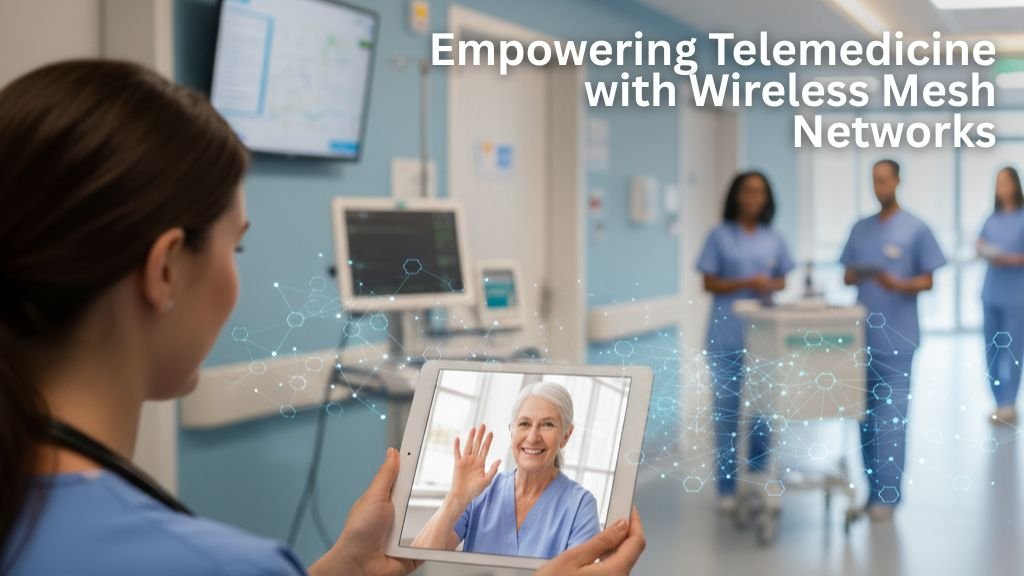Healthcare has entered a new era where technology connects doctors, patients, and medical devices like never before. From virtual consultations to real-time patient monitoring, telemedicine has become an essential part of modern healthcare delivery. But behind this innovation lies a critical foundation — reliable and uninterrupted connectivity.
That’s where Wireless Mesh network products for healthcare are making a major difference. These networks ensure hospitals and clinics can deliver high-quality telemedicine services without delays, dropouts, or disconnections.
Why Connectivity Is the Heart of Telemedicine
Telemedicine depends heavily on live video consultations, remote diagnostics, and real-time data sharing between patients and healthcare providers. Even a few seconds of lag or downtime can impact patient safety and care outcomes.
Traditional Wi-Fi networks often struggle in hospital environments because of thick walls, medical equipment interference, and large, multi-building campuses. Wireless mesh networks overcome these challenges by creating a self-healing web of connectivity, where each node communicates with others to ensure seamless coverage.
To learn how Aeromesh’s technology supports this, visit their detailed page on Healthcare & Education solutions.
How Wireless Mesh Networks Strengthen Telemedicine
-
Seamless Video Consultations
With multiple connection paths, mesh networks ensure that video consultations between doctors and patients run smoothly, even during peak hours. -
Reliable Remote Monitoring
Hospitals can deploy IoT sensors and monitoring devices that transmit patient data continuously. Mesh networks maintain constant communication between these devices and the central monitoring system. -
Scalability for Growing Facilities
As hospitals expand or add new wings, new nodes can easily be added to the network without complex cabling or major downtime. -
Enhanced Mobility
Wireless Mesh network products for healthcare allow medical teams to move between wards or even buildings without losing connectivity — essential for mobile workstations, digital tablets, or handheld diagnostic devices. -
Improved Security and Compliance
Healthcare networks handle sensitive patient data. Advanced mesh solutions use encryption, secure routing, and access control to maintain data integrity and meet healthcare compliance standards.
Real-World Benefits
A well-deployed wireless mesh network translates into measurable improvements:
-
Reduced waiting times and faster remote consultations.
-
Lower IT maintenance costs.
-
Better communication between departments.
-
Greater patient satisfaction with uninterrupted care delivery.
By implementing Aeromesh’s Wireless Mesh Network Solutions for Healthcare, hospitals can future-proof their operations, expand telemedicine capabilities, and focus more on patient care than network issues.
The Future of Connected Healthcare
The future of healthcare is wireless, intelligent, and data-driven. From AI-assisted diagnostics to wearable health devices, every innovation depends on fast, resilient, and secure connectivity. Wireless Mesh network products for healthcare are the invisible backbone of this digital transformation — ensuring that critical care is never out of reach.
FAQs
1. What are Wireless Mesh network products for healthcare?
These are networking solutions designed to provide seamless, self-healing connectivity across hospitals and clinics. They enable real-time communication for telemedicine, patient monitoring, and digital record systems.
2. How do mesh networks improve telemedicine services?
Mesh networks offer stable video and data connections even in large hospital environments. They prevent dropouts and ensure doctors can consult, diagnose, and monitor patients remotely without interruption.
3. Are Wireless Mesh networks secure enough for medical data?
Yes. Modern mesh solutions use encryption, authentication, and network segmentation to meet healthcare data protection standards, ensuring all patient information remains private and secure.
